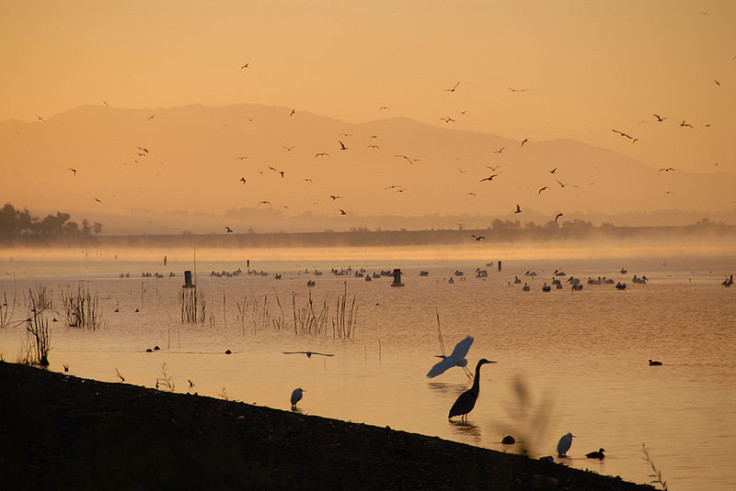Botulism Killing Thousands Of Great Lakes Birds, Biologists ‘Getting Closer’ To Finding Source Of Deadly Bacterium

Avian botulism, a fatal disease caused by a toxin that triggers paralysis, is decimating Great Lakes bird populations. Since 2000, dead gulls, loons and other waterfowl have washed up on Great Lakes beaches by the dozens or even hundreds, having drowned after their muscles became stiff. Scientists are still trying to figure out exactly how the birds are becoming infected with botulism.
"It's kind of like a detective story," David Blehert, a microbiologist with the U.S. Geological Survey’s National Wildlife Health Center in Madison, Wis., told the Associated Press. "You find a body somewhere. You want to find out where the incident took place. You look for clues on the body, you find a piece of hair, a piece of fiber, and trace it back to the location and hopefully find your culprit."
According to the National Wildlife Health Center, Great Lakes birds become infected with botulism when they ingest a toxin produced by a bacterium called Clostridium botulinum. The toxin thrives in oxygen-poor environments and can stay dormant for years even in adverse conditions.
According to the USGS, more than 100,000 Great Lakes birds have died from botulism since 2000. Pinpointing how exactly the birds are coming into contact with the botulism bacterium would allow wildlife experts to eliminate the source or, at least, mitigate it.
"We haven't got there yet, but we're getting closer," Stephen Riley, a fishery biologist with the USGS Great Lakes Science Center, told the Associated Press.
According to The Guardian Express, finding the source of botulism in the Great Lakes has proved difficult, partly because the toxin is both man-made and occurs naturally in the environment. Pollution, such as urban runoff, is one source of botulism. Rotting algae is another.
The leading theory is actually an amalgam of many factors. Scientists believe climate change, invasive species, pollution and natural factors all play a role in botulism bacteria production. One thing is for sure: It’s ended up in the Great Lakes food chain, and the birds are bearing the brunt of the environmental damage.
"It's a complex ecological problem, made more complex by Lake Michigan's changing food webs, the transient nature of toxin production, the fact that many of the affected birds are migratory, and the restrictions on lab testing due to bioterrorism concerns," Brenda Moraska Lafrancois, a regional aquatic ecologist with the National Park Service out of Ashland, Wis., told the Macomb Daily.
According to the Associated Press, scientists first documented botulism in Great Lake birds in 1963, but the rates of infection have become more frequent in the last 13 years or so.
Researchers in Florida have begun testing some of the leading theories of where the botulism is coming from. Wildlife experts from Florida Atlantic University are placing stuffed bird carcasses into tanks of water to study water resistance. Other biologists are taking sediment samples at the lakes. Like pieces of a puzzle, the results of these tests will be put together and hopefully give scientists a better idea of how botulism is infecting Great Lakes birds.
© Copyright IBTimes 2024. All rights reserved.












